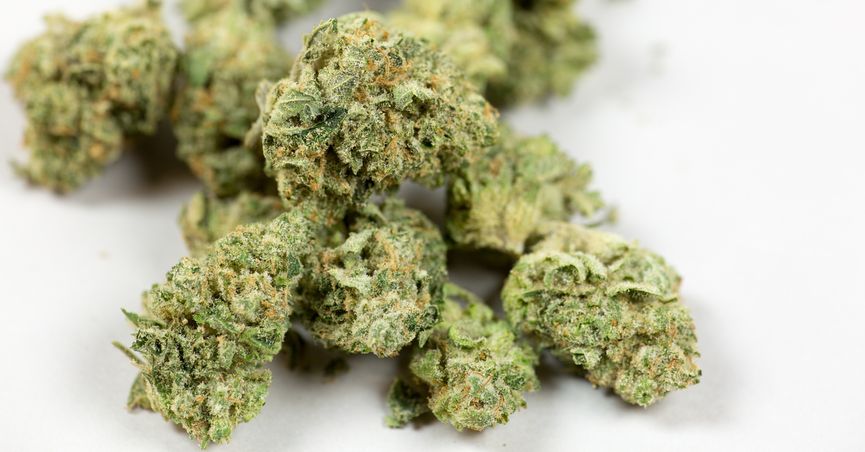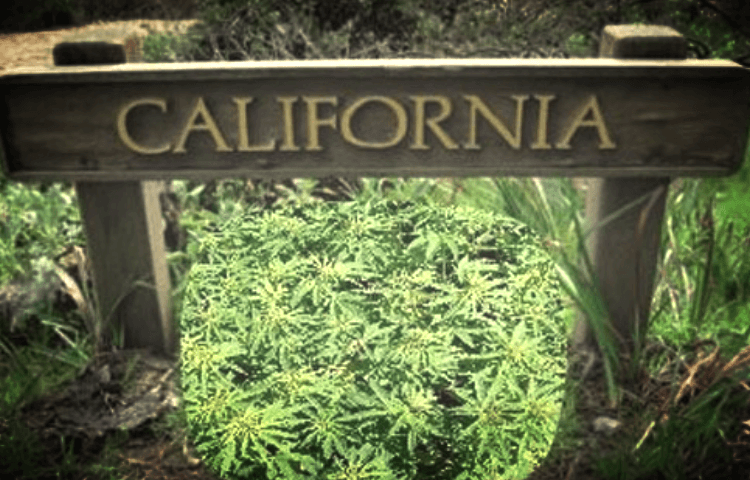Water in California is a notoriously hot commodity. As a state that’s spent more time in a drought than out of it during the past five years, legalizing a new, water-intensive agricultural crop—especially when that crop has the historical baggage that cannabis does—is a complicated process.
Done carelessly, cannabis grows can have profoundly negative impacts on nature, polluting waterways with pesticides and clearing trees and shrubs that help support a healthy ecosystem. This is especially true of illegal cultivation, which has bled into national forests and other protected land in recent years.
On the flipside, when done thoughtfully, cannabis uses a lot less water than California’s other agricultural staples, such as almonds, said Hezekiah Allen, executive director of the California Growers Association—and it offers a considerably higher profit margin.
“We’ve got a [water] crisis on our hands in California, and it’s much bigger than cannabis,” Allen said.
In an effort to balance environmental concerns with marijuana’s projected $7 billion market, California is ushering in a bevy of rules and regulations related to water use. In June, Gov. Jerry Brown signed a cannabis omnibus bill that, among other things, sets standards for organic marijuana and establishes environmental protections.
The bill, SB 94, includes a provision that allows regulators to restrict cannabis cultivation if they determine it’s causing environmental harm. Specifically, it bars the Department of Fish and Wildlife “from issuing new cannabis licenses or increasing the total number of plant identifiers within a watershed or area, if the board or the Department of Food and Agriculture finds, based on substantial evidence, that cannabis cultivation is causing significant adverse impacts on the environment in a watershed or other geographic area.”
In other words, the goal is to limit cultivation to only what California’s ecosystems can support.
The clause is similar to one tucked into Proposition 64, which voters passed last year to legalize adult-use marijuana. It requires each individual cannabis plant to display a unique ID number—and it says that if a particular watershed can’t support additional cultivation, no new plant identifiers will be issued.
That means growers won’t be able to plant where there’s not enough water to support their crops—something that could spell disaster for cultivators who rely solely on water from watersheds, said Allen, a former grower who now focuses full-time on public policy.
California currently plays host to roughly 40,000 to 80,000 cannabis growers, according to estimates from both industry groups and the US Drug Enforcement Agency. To stay afloat, cultivators will need to focus on sustainability, Allen said, such as storing rainwater during the wet months for use during the dry summer.
“It’s not going to be, ‘No you can’t grow,’” he said. “It’s going to be, ‘No you can’t grow unless you store enough water.’”
The overarching goal of the legal framework around water use is to require growers to be “good stewards” of water if they want to continue operations unimpeded, said Allen, noting that cannabis can actually be grown on a very small footprint using “barely any water” compared to California’s other primary cash crops. Most cannabis-producing regions in the state, he said, could rely completely on captured rainwater to irrigate.
But while rainwater is free, the equipment to capture and store it can cost a pretty penny. Allen said cultivators need to formulate realistic business plans that fold in the cost of a rain-catchment system. For a in Northern California, that could cost approximately $250,000 to $300,000.
While the wonders of rainfall may work fine for Northern California growers, the approach runs into problems in the arid climes of Southern California. By Allen’s calculations, based on the average amount of water needed per square foot of grow space, a cultivator with a 100-square-foot cultivation area would need to capture 15 inches to 18 inches of rain per year to effectively irrigate. While this past winter was California’s rainiest season in 122 years—with the state, on average, receiving a whopping 27 inches between October 2016 and February 2017—that’s far from the norm. The five seasons prior saw record low rainfall throughout the state, with many Southern California cities getting less than 10 inches per year.
The rules governing water use in cannabis are complex and intertwined. They include statutes born of cannabis laws as well as regulations promulgated by various state agencies. Earlier this month, the State Water Resources Control Board released its 117-page draft cannabis cultivation policy, which aims to ensure that water diversion and waste disposal don’t harm wetlands, water quality, or animal habitats. The rules apply not only to commercial medical and commercial adult-use cultivators, they also govern home growers.
“These are unique requirements for cannabis cultivation, recognizing the impacts that we’re seeing out there in the watershed and where these grows are taking place,” said Erin Ragazzi, assistant deputy director of at the State Water Resources Control Board’s water rights division.
Under the agency’s regulations, cannabis cultivators will be allowed to divert water from streams during the wet, winter months as long as a given waterway’s flow is above a certain level. If water drops below that pre-designated mark, growers will be barred from tapping in.
During the dry season, Ragazzi said, cultivators will be banned from diverting water no matter what the conditions.
The new draft policy acknowledges California’s “size and geographic diversity,” explaining that within the state’s 163,696 square miles, there are 800 miles of coastline, multiple mountain ranges, and hundreds of scattered valleys. These factors all lead to “highly variable climate, precipitation and drainage patterns,” which is why water board has divided the state into 14 different regions, each with varying requirements around how much water needs to be present in a stream before that water can be used to grow cannabis.
Much of the conversation around water regulation is currently focused on outdoor grows, particularly in California’s agricultural epicenters such as the Central Valley and Emerald Triangle. Indoor growing is going to be “particularly tricky,” said Allen of the California Growers Association.
Most indoor cultivators will have to pump water from their respective municipal agencies—but will only be allowed to do so if the water the agency is receiving is eligible for use by a cannabis grow. Los Angeles, for example, owns municipal reservoirs but also buys imported water to supplement supply. If it turns out the municipal agency is in fact getting its water from a federal dam or watershed that’s overextended, the grow won’t be allowed to use it, Allen said.
“It doesn’t matter where the water comes out of the tap,” he explained. “It matters where the water comes out of the ecosystem.”
Which is something that many cannabis cultivators along the North Coast haven’t seem too concerned with, according to Kathryn Phillips, director of Sierra Club of California. Growing medical marijuana has been legal for 20 years, she said, yet many of the cultivators know nothing about water rights, regulations, or protecting the environment from pesticides, she said.
“They’re allowed to grow this stuff, and they’re doing it in a way that’s creating substantial harm for plants, for the waterways, for animals,” said Phillips. “Marijuana growers are part of California’s agricultural industry, and, I think until relatively recently, they’ve seen themselves as being different.”
The North Coast has been impacted significantly by both legal and illegal grows, Phillips said. Cannabis, can cause erosion, contaminate wildlife habitat, and leave behind debris or toxins. This may be in part because cannabis growers have tended to be located in more remote areas, sometimes out of reach of patrolling water enforcers, she said. Non-cannabis farmers are more typically located within agricultural districts, subject to oversight and familiar with water-use practices (including water cuts) that historically haven’t been imposed on cannabis growers, she said.
The Sierra Club tried to change this through its involvement in prior legislation that aimed to hold cannabis cultivators to the laws of the Fish and Wildlife Department and State Water Resources Board, which all other state agricultural operations are required to follow.
“What if every farmer in the San Joaquin Valley did not obey the law?” she asked. “Can you imagine what a mess it would be?”
In short, while there’s been regulation, there so far hasn’t been much education or enforcement, said Phillips. That stands to change under new state laws and cannabis regulations, which allocate the funds needed to hire staff, implement educational programs, and build out an enforcement team.
California will almost assuredly face droughts in the future. Some farmers are already looking north. But if the state’s emerging water-use rules work out, the newest legal crop—considered one of the largest—may be able to keep on growing.
credit:420intel.com










